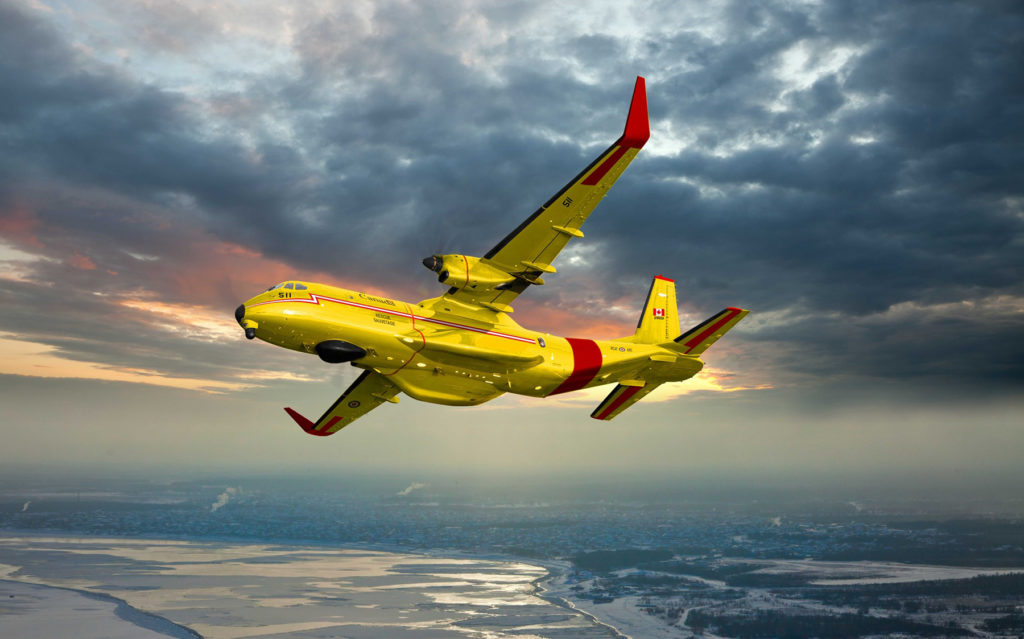Estimated reading time 4 minutes, 22 seconds.
The arrival of the Royal Canadian Air Force’s (RCAF) new fixed-wing search and rescue (FWSAR) aircraft fleet is getting closer and closer.

In March 2019, the first aircraft rolled off the assembly line in Spain. Now, with delivery expected to begin next year in Comox, B.C., it’s time to name the RCAF’s newest bird!
The project management office and 1 Canadian Air Division, which are jointly responsible for naming new aircraft fleets, consulted with the operational search and rescue community to come up with several possible names for the CC-295. The commander of the RCAF, LGen Al Meinzinger, will have the final say on the name.
Five names have been shortlisted for his decision. They are, in alphabetical order:
Canso II: Canso aircraft served with 11 RCAF squadrons during the Second World War. They operated from both coasts and were employed in coastal patrols, convoy protection and submarine hunting. After the Second World War, Cansos served with the RCAF in photo reconnaissance and search and rescue roles until they were finally retired in November 1962.
Guardian: A guardian is an entity that protects a community under a set of values.
Iris: Iris refers to the faculty or power of seeing. Iris was also the goddess of sea and sky in ancient Greek mythology.
Kingfisher: Found all across Canada, this bird patrols up and down rivers, constantly searching for prey. Within the First Nations of the Northwest, the kingfisher has long been recognized for its speed and agility, as well as its keen searching and hunting skills. A kingfisher was depicted on the 1986 Canadian five-dollar banknote in the “Birds of Canada” series.
Turnstone: Turnstones are one of the migratory marvels of the Arctic bird world. They have been known to fly more than 1,000 kilometres (600 miles) in a single day.
The short list complies with basic legal principles and gender-based analysis considerations, as well as guidance set out by the International Civil Aviation Organization (IACO) and Transport Canada. They have also been assessed to ensure they respect the conventions for an aircraft’s “popular” name that are contained in the Department of National Defence’s “Technical Airworthiness Manual” (TAM), which provides the direction on aircraft naming. These conventions for a popular name, by which an aircraft is known within DND, include the following:
- If a new aircraft already has a suitable official and commonly-used name, that name will be retained.
- The name must have a Canadian connotation.
- The name shall consist of only one word, and be selected to conform to the characteristics of the aircraft and its basic mission rather than the source of the aircraft’s manufacture
- The name should appeal to the imagination without sacrificing dignity, and should suggest confidence in the capabilities of the aircraft.
- The name must not duplicate those in use for other types of equipment.
- Previously associated names may be utilized if suitable (i.e., Musketeer / Musketeer II and Harvard / Harvard II).
- All aircraft series within a basic mission and type will retain the same name (for instance, CC-130E, CC-130H and CC-130J Hercules).
Once LGen Meinzinger selects a name, it will be formally protected under the “Trade-marks Act” before we announce it to ensure that we avoid any form of complaints or conflict with another organization.
If we find that the selected name cannot be cleared for use, the commander will make another selection.
Since the SAR Helicopter is a “Cormorant”, I believe “Kingfisher”, would be very appropriate for all Canadians
Is there any bird or animal that reflects the values of DND from what Civilian operators have noticed hiring people after getting the pensions they wanted. being promoted in the last years so the pay is huge for incompetent people beyond a rank they deserve Something that really reflects the value but I don’t know of any lazy self-entitled birds with very big egos trained but have zero experience or talent leaving companies like Helifor crying being scared or getting fired for destroying equipment and not giving one tiny care of cost, Maybe a Sea Slug would be appropriate
Kingfisher seems apt to me
I believe “Seeker” would be an apporaite name for the new SAR f/w aircraft. The name compresses the very essence of what the aircraft and its crew are selected to do .
The name Guardian is suitable as the men and women who serve on this new aircraft are the future protectors/rescuers of people lost at sea or on land.